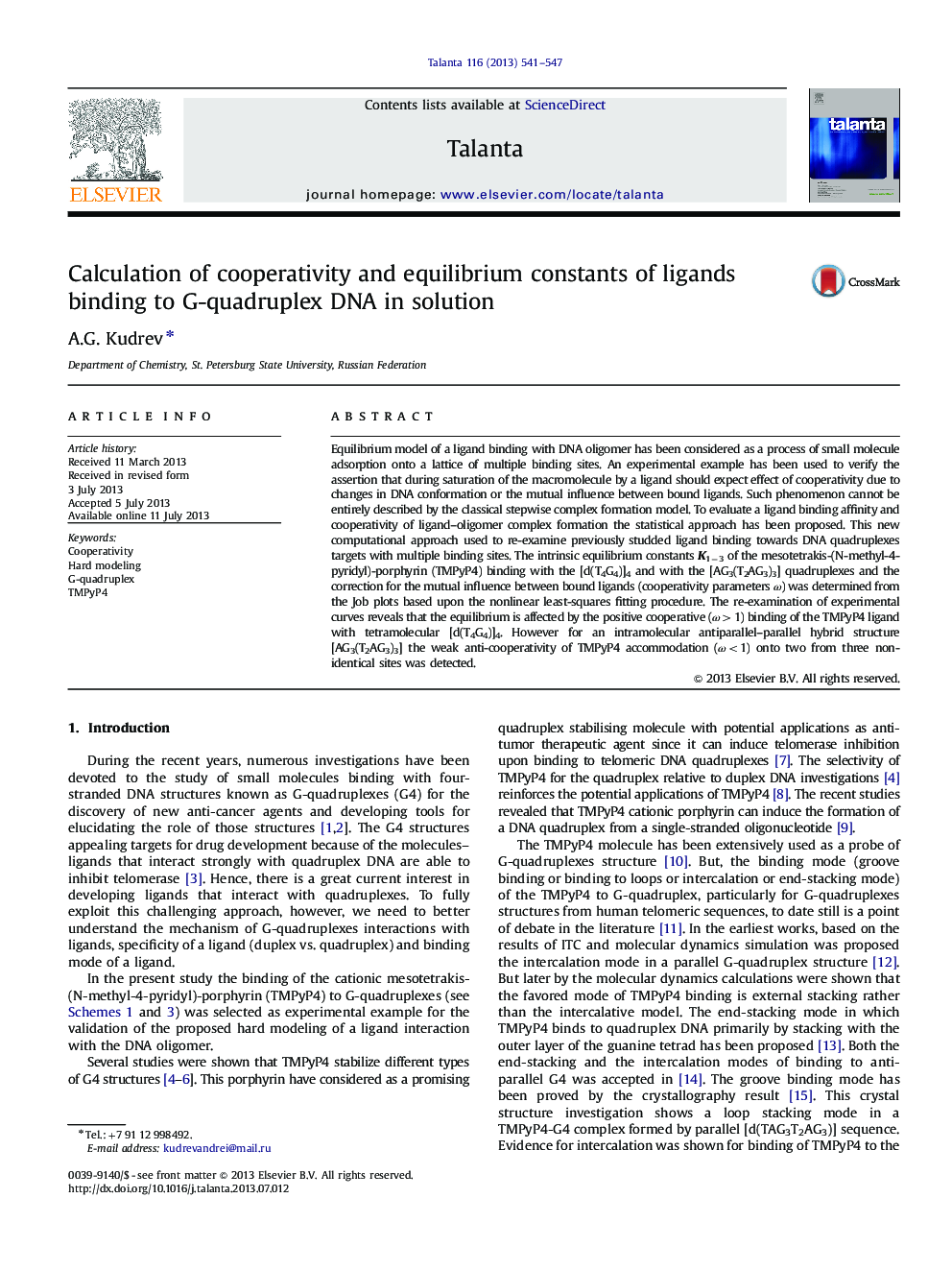| Article ID | Journal | Published Year | Pages | File Type |
|---|---|---|---|---|
| 7683030 | Talanta | 2013 | 7 Pages |
Abstract
Equilibrium model of a ligand binding with DNA oligomer has been considered as a process of small molecule adsorption onto a lattice of multiple binding sites. An experimental example has been used to verify the assertion that during saturation of the macromolecule by a ligand should expect effect of cooperativity due to changes in DNA conformation or the mutual influence between bound ligands. Such phenomenon cannot be entirely described by the classical stepwise complex formation model. To evaluate a ligand binding affinity and cooperativity of ligand-oligomer complex formation the statistical approach has been proposed. This new computational approach used to re-examine previously studded ligand binding towards DNA quadruplexes targets with multiple binding sites. The intrinsic equilibrium constants K1â3 of the mesotetrakis-(N-methyl-4-pyridyl)-porphyrin (TMPyP4) binding with the [d(T4G4)]4 and with the [AG3(T2AG3)3] quadruplexes and the correction for the mutual influence between bound ligands (cooperativity parameters Ï) was determined from the Job plots based upon the nonlinear least-squares fitting procedure. The re-examination of experimental curves reveals that the equilibrium is affected by the positive cooperative (Ï>1) binding of the TMPyP4 ligand with tetramolecular [d(T4G4)]4. However for an intramolecular antiparallel-parallel hybrid structure [AG3(T2AG3)3] the weak anti-cooperativity of TMPyP4 accommodation (Ï<1) onto two from three nonidentical sites was detected.
Related Topics
Physical Sciences and Engineering
Chemistry
Analytical Chemistry
Authors
A.G. Kudrev,
